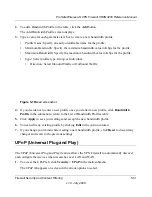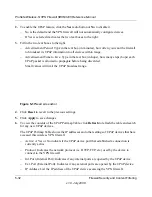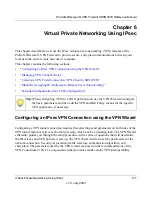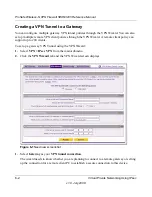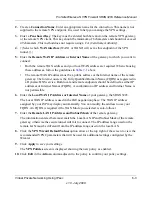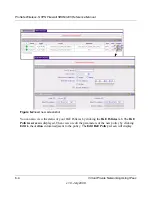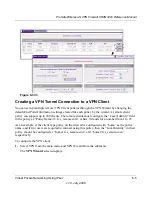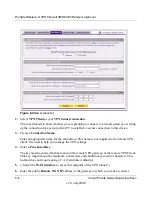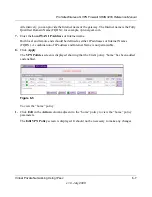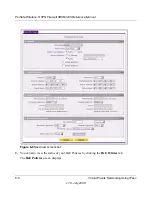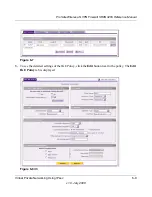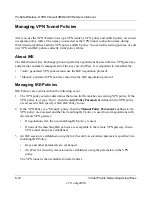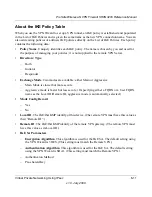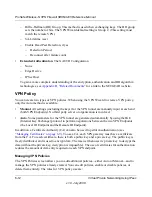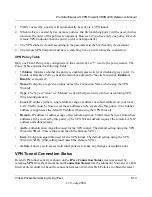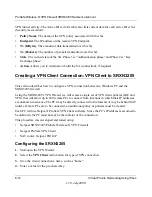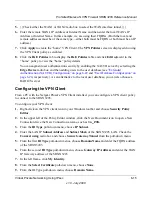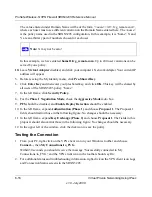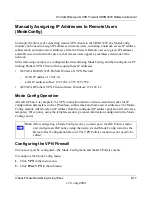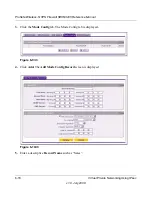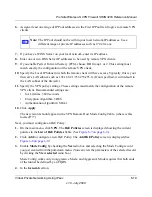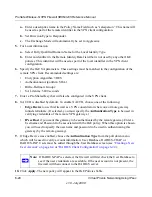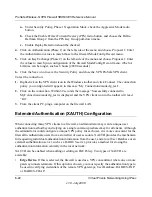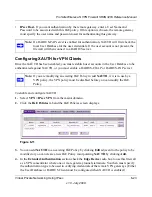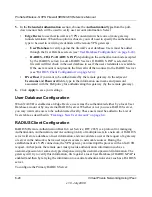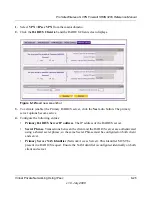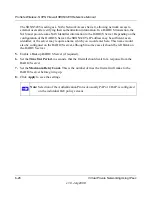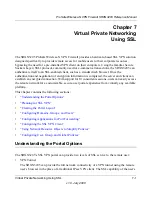
ProSafe Wireless-N VPN Firewall SRXN3205 Reference Manual
6-12
Virtual Private Networking Using IPsec
v1.0, July 2008
–
Diffie-Hellman (DH) Group. This method is used when exchanging keys. The DH group
sets the number of bits. The VPN Wizard default setting is Group 2. (This setting must
match the remote VPN.)
–
SA-Lifetime (sec)
–
Enable Dead Peer Detection, if yes
–
Detection Period
–
Reconnect after failure count
•
Extended Authenticaton
. The XAUTH Configuration
–
None
–
Edge Device
–
IPSec Host
To gain a more complete understanding of the encryption, authentication and DH algorithm
technologies, see
Appendix B, “Related Documents”
for a link to the NETGEAR website.
VPN Policy
You can create two types of VPN policies. When using the VPN Wizard to create a VPN policy,
only the Auto method is available.
•
Manual
. All settings (including the keys) for the VPN tunnel are manually input at each end
(both VPN Endpoints). No third party server or organization is involved.
•
Auto
. Some parameters for the VPN tunnel are generated automatically by using the IKE
(Internet Key Exchange) protocol to perform negotiations between the two VPN Endpoints
(the Local ID Endpoint and the Remote ID Endpoint).
In addition, a Certificate Authority (CA) can also be used to perform authentication (see
“Managing Certificates” on page 8-9
). To use a CA, each VPN gateway must have a certificate
from the CA. For each certificate, there is both a public key and a private key. The public key is
freely distributed, and is used to encrypt data. The receiver then uses its private key to decrypt the
data (without the private key, decryption is impossible). The use of certificates for authentication
reduces the amount of data entry required on each VPN endpoint.
Managing VPN Policies
The VPN Policies screen allows you to add additional policies—either Auto or Manual—and to
manage the VPN policies already created. You can edit policies, enable or disable policies, or
delete them entirely. The rules for VPN policy use are:

